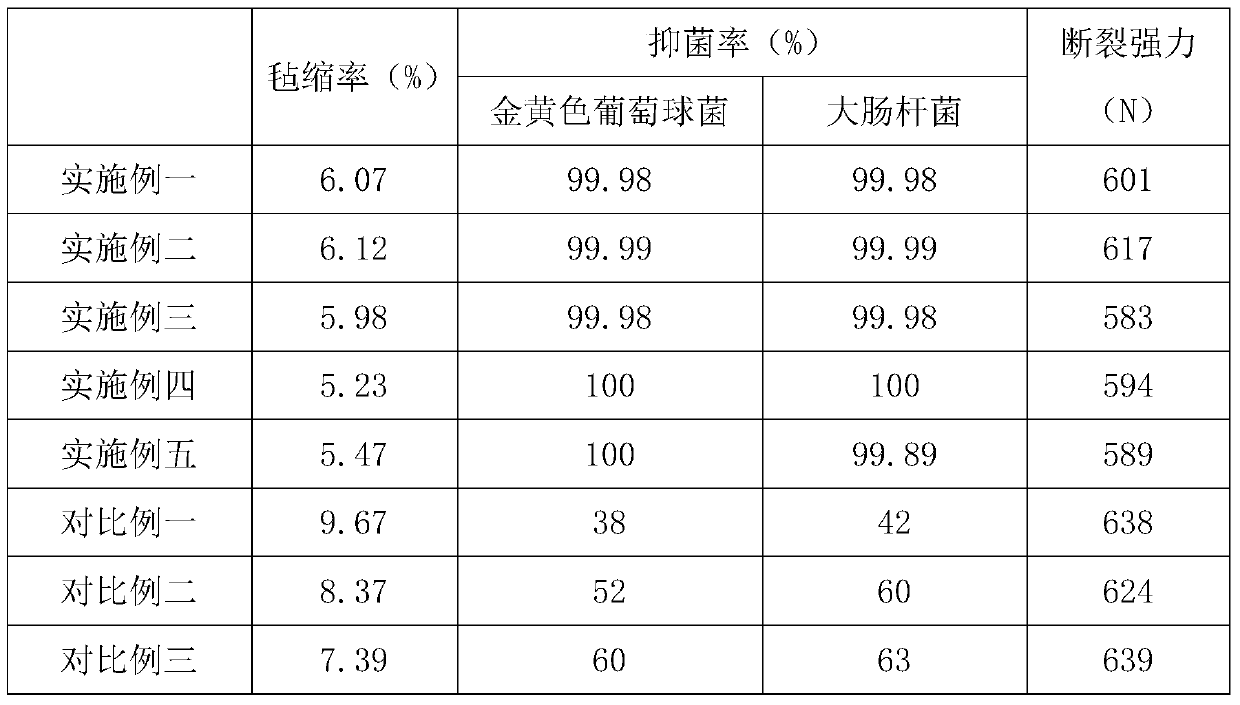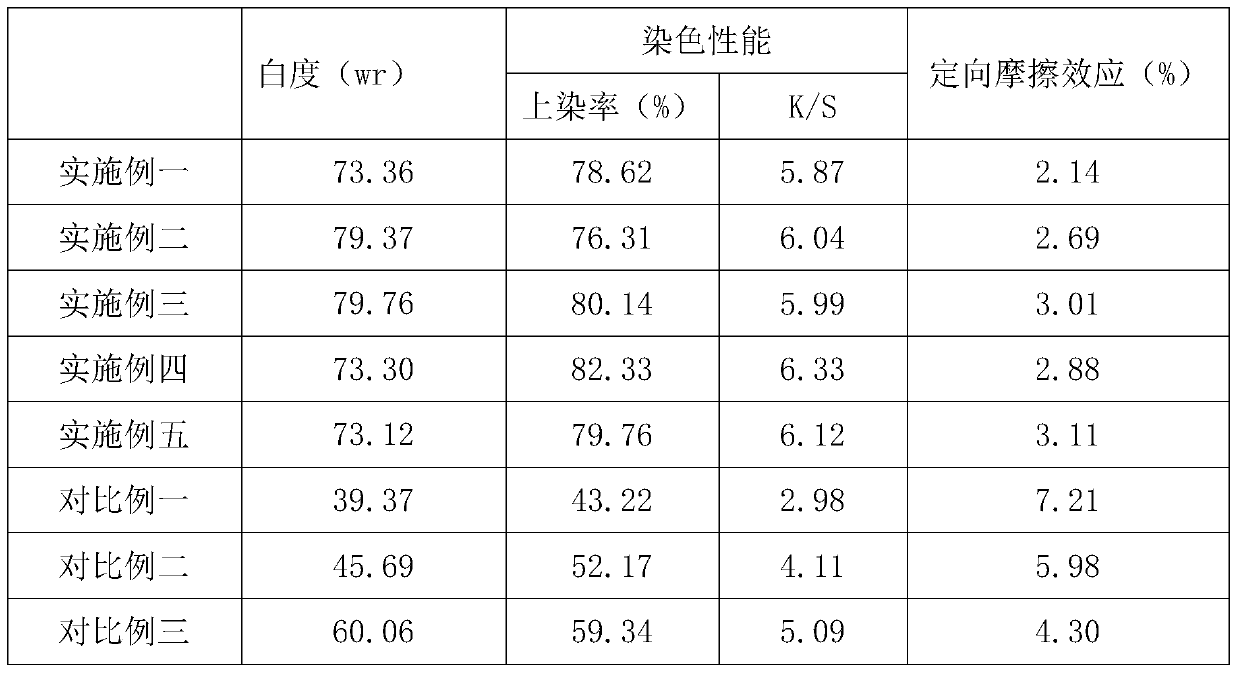A kind of antibacterial and anti-felt shrinkage finishing method of wool fabric
A fabric and wool technology, applied in the field of antibacterial and anti-felting finishing, can solve the problems of hard hand feeling, large fabric damage, poor biodegradability, etc., achieve the effect of inhibiting keratinase and improving antibacterial performance
- Summary
- Abstract
- Description
- Claims
- Application Information
AI Technical Summary
Problems solved by technology
Method used
Image
Examples
Embodiment 1
[0046] An antibacterial and anti-felting finishing method for wool fabrics, comprising the following steps:
[0047] The first step: wool fabric hydrogen peroxide pretreatment:
[0048] Processing technology:
[0049] The concentration of hydrogen peroxide is 20%, the amount of sodium hydroxide added is 0.1g / L, the pH value is 7.5, the treatment temperature is 30°C, the treatment time is 20 minutes, and the bath ratio is 1:20;
[0050] Stir and heat to 50°C after treatment;
[0051] The second step: biological enzyme treatment:
[0052] Processing technology:
[0053] Keratinase treatment: the amount of keratinase added is 50U / g wool fabric, the pH value is 8.0, the treatment temperature is 50°C, the treatment time is 20 minutes, and the liquor ratio is 1:30;
[0054] Alkaline protease treatment: the amount of alkaline protease added is 100u / g wool fabric, the pH value is 8.0, the treatment temperature is 60°C, the treatment time is 10 minutes, and the liquor ratio is 1:30...
Embodiment 2
[0062] An antibacterial and anti-felting finishing method for wool fabrics, comprising the following steps:
[0063] The first step: wool fabric hydrogen peroxide pretreatment:
[0064] Processing technology:
[0065] The concentration of hydrogen peroxide is 22%, the amount of sodium hydroxide added is 0.2g / L, the pH value is 8.0, the treatment temperature is 35°C, the treatment time is 30 minutes, and the bath ratio is 1:20;
[0066] Stir and heat to 50°C after treatment;
[0067] The second step: biological enzyme treatment:
[0068] Processing technology:
[0069] Keratinase treatment: the amount of keratinase added is 60U / g wool fabric, the pH value is 8.0, the treatment temperature is 50°C, the treatment time is 25 minutes, and the liquor ratio is 1:30;
[0070] Alkaline protease treatment: the amount of alkaline protease added is 200u / g wool fabric, the pH value is 8.0, the treatment temperature is 60°C, the treatment time is 20 minutes, and the liquor ratio is 1:30...
Embodiment 3
[0078] An antibacterial and anti-felting finishing method for wool fabrics, comprising the following steps:
[0079] The first step: wool fabric hydrogen peroxide pretreatment:
[0080] Processing technology:
[0081] The concentration of hydrogen peroxide is 20%, the amount of sodium hydroxide added is 0.2g / L, the pH value is 7.5, the treatment temperature is 35°C, the treatment time is 20 minutes, and the bath ratio is 1:20;
[0082] Stir and heat to 50°C after treatment;
[0083] The second step: biological enzyme treatment:
[0084] Processing technology:
[0085] Keratinase treatment: the amount of keratinase added is 60U / g wool fabric, the pH value is 8.0, the treatment temperature is 50°C, the treatment time is 20 minutes, and the liquor ratio is 1:30;
[0086] Alkaline protease treatment: the amount of alkaline protease added is 200u / g wool fabric, the pH value is 8.0, the treatment temperature is 60°C, the treatment time is 10 minutes, and the liquor ratio is 1:30...
PUM
 Login to View More
Login to View More Abstract
Description
Claims
Application Information
 Login to View More
Login to View More - R&D
- Intellectual Property
- Life Sciences
- Materials
- Tech Scout
- Unparalleled Data Quality
- Higher Quality Content
- 60% Fewer Hallucinations
Browse by: Latest US Patents, China's latest patents, Technical Efficacy Thesaurus, Application Domain, Technology Topic, Popular Technical Reports.
© 2025 PatSnap. All rights reserved.Legal|Privacy policy|Modern Slavery Act Transparency Statement|Sitemap|About US| Contact US: help@patsnap.com


